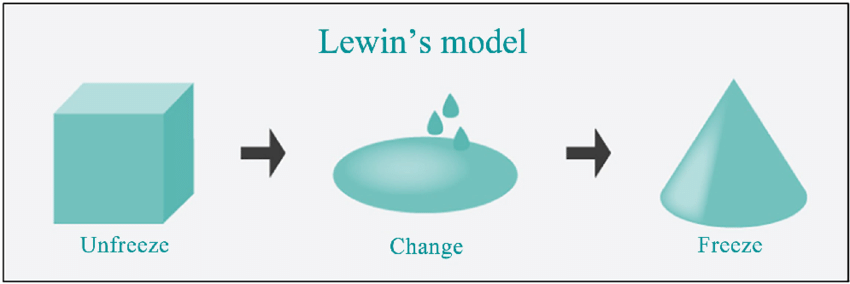Change Management | Assignment Help
Introduction
In the 21st century every business of any type is operating under fast-affecting surroundings that are searching for the rapidity of transform to sluggish. In truth, businesses should grip change. Change is significant for any organization as, devoid of transform, the companies would likely misplace their rivalry edge and not make the grade to congregate the changing requirements of their customers.
The perception of “change management” is a recognizable one in most organizations today. But, how these organizations supervise change (and how victorious they are at it) diverged extremely depend on the type of the trade, the modifications as well as the staff who is involved in it and at what degree that can understand the significance of change (Romanelli & Tushman, 1994).
One of the foundation stone models on accepting organizational change was introduced by Kurt Lewin back in the era of 1940s. His model presents three different elements such recognized as Unfreeze, Change, and Refreeze. This first phase of change engages arrange the business to acknowledge that change is essential, which engages break down the obtainable position quo previous to build up an innovative way of in service. After the indecision wrought in the unfreeze stage, the modify phase is where people commence to make their mind and perform things according to change. At the time when modifications take place and people have accepted the unique methods of doing work, Lewin thinks that the organization should ready to refreeze. Different HR theorist argue that the third point of Lewin theory to refreeze the change is not implement on organizations as both internal & external factors are now changing time by time and only those organizations can survive in this 21st century who can adopt changes. This report is the discussion against the Lewin theory of change third step, which is refreezing the change in organization.
Kurt Lewin’s change model ‘Refreezing’ stage criticism
“If you don’t bring change in organization time by time, your business can dead”.
Kurt Lewin believes that organizations should bring a change in its structure but then the management should loc that change so that all employees strict to that change and adopt it. Lewin’s modal Refreezing is the concluding phase and we require reinforcing the modifications made and steady the innovative culture in order to keep away from people to go reverse to their mature customs. At this phase, it is essential to motivate employees by offering them different incentives in the shape of admiration or reward for become accustomed to the new traditions. The procedure as a complete is accomplished throughout good leadership, connection between employees & bosses, learning as well as training (Cummings and Worley, 1997).
In the twenty-first century it will be tricky to put into practice the refreezing phase, as the word “refreezing” require a serious assessment. (Burke, 1976) introduced a “slush” model by where he affirmed that modifications in technology, member of staffs, jobs and organization are more recurrent. Organizations need to change themselves according to the new technology, customer needs & wants and must have a flexible structure as well as flexible and intellectual employees who are keen to learn everything and must adopt things as they are changing. Although many organizations forcing their employees to adopt changes while motivating them in forms of giving incentives but this is not a good idea to bring change. Refreeze the change in an organization is no longer a choice as in this century, revolutionize is affecting more rapidly than before. If organizations don’t change their structure with the changing of new science then it is possible that they might face lose in their business or can’t be remain competitive player in the industry (Kanter, Stein and Jick, 1992).
Refreezing – not a practical solution in modern era
As stated earlier that market is changing day by day. If organizations just focus on one dimension of change then they can’t fight with those organizations that are continuously changing the needs of customers, technology, growing opportunities as well as economy. Below are some factors discussed, with whom the light we can understand why organizations need continues process of change?
Innovative Technology
Change that consequences from the acceptance of innovative technology are widespread in the majority businesses and while it can be troublesome at first, eventually the change is inclined to boost output and service knowledge also has exaggerated how people contact with each other. Let’s take an example, if people contact with each other via a traditional telephone and seam that phone is going busy. May be he/she tries again & again or find that relevant person phone is dead. This means that he/she will fail to contact next person. If the person is aware of technology, he/she may use different modes of communication to contact that person like cell phones, social media sites, voice mail, Skype etc. this is the difference, if an organization don’t teach their people with the new changing’s in market, the business will run slowly. However, if management adopts new technologies they can perform very well (Graetz, Rimmer, Lawrence and Smith, 2011).
Transforming technology is an innovation in itself, while permit organizations to experience new thoughts at momentums and prices that were inconceivable even a century ago. New technologies are attached with characteristics on Web sites and inform within minutes the changing patterns of customers. Those organizations that can understand the modifying consumer patterns and try to design their products & services with new modern era demands are successful and capturing higher market share in industry as compare to those who are not changing themselves (Kanter, Stein & Jick, 1992).
Changing Customer Needs
Customers’ needs & requirements to experience a product or service are changing every time. Organizations who understand those changing needs of customers can perform efficiently in contrast to those organizations that are doing business with their traditional products and cant investment on their R&D to known changing needs of customers and try to manufacturer such goods & services that can fulfill them (Darwin, Johnson and McAuley, 2002).
The Economy
The economy can contact organizations in both optimistic and unenthusiastic means and in cooperation can be demanding. A strapping economy and mounting requirement for goods and services will stand for that organizations must believe development that may engage the accumulation of employees as well as new innovative amenities. Such modifications usually suggest prospect for employees, but also communicate to look new disputes. A scrawny economy can generate even more difficulties as organizations discover themselves require to create tricky pronouncements that can impact workers’ salaries and advantages and even intimidate their occupations. The aptitude to administer both sides of the range is dangerous for companies that want to preserve a tough brand name and powerful associations with buyers as well as other staff members (Darwin, Johnson and McAuley, 2002).
Opportunities for development
Change is significant in organizations to permit human resources to study innovative ability’s discover new prospects and work out their imagination in ways that eventually advantage the business through innovative thoughts and augmented obligations. Prepare workers to contract with these transforms engages an examination of the contrivances and guidance necessary to assist them be trained new expertise’s. Training can be offer during customary classroom surroundings or, more and more, from side to side online culture prospects. Prominently, businesses require doing an excellent work of appraise workers’ potential and then enchanting paces to plug the gaps among present proficiencies and the abilities necessary to take action to development (Collins 1998, pp.45).
Challenging the Status Quo
Every organization must ask a simple question “Why?” to employees. This will lead to bring fresh ideas and innovative improvements that can honestly contact the underneath line. Organizations advantage from transform those consequences in innovative means of searching at customer necessitates, new means of distribute consumer service, innovative signifies of intensification customer communications and new-fangled products that may draw attention new markets. New workers who stick together to organization are in particular precious as they have a lot of opportunities to grow but organizations must teach matured employees how to bring change in their every day work that can benefit organizations e (Cummings and Huse, 1989).
Organizations Experience fails with Lewin’s change model:
In 1980s, with the oil distress, many companies in Japan face financial slump in the West, as they don’t change themselves according to industry fluctuations (Nonaka, 1988). After that time it was understandable that many organizations desirable to change themselves in haste and frequently viciously if they want to endure (Burnes, 2000). Due to many largest companies downsizing, many HR theorists start criticize Lewin’s plan especially by the cultural excellence school thought.
Kritsonis (2004) disputes that many Western organizations were facing lower rivalry edge as they were excessively ceremonial, inflexible, and did not change themselves according to changing circumstances. As an alternative of the conventional management style followers of Culture-Excellence argued the incorporated nature of businesses, both on the inside and within their surroundings (Kanter, 1983). In order to survive, many theorist said organizations should not refreeze change but companies should build their internal & external synergies according to the recent trends





